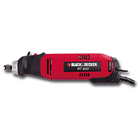DIY Tools

If you’re fed up with the DIY hard slog, why not add some might to your tool collection with a power drill or an electric screwdriver? These versatile tools can help you complete your work with a minimum of effort and with time to spare.
Power Drills
A Power Drill is basically a beefed up electric version of the trusted hand drill. Whether you’re intending to work wood, metal or concrete, the power drill will make light of any holes you intend to create and may also offer a little more besides. Before you make a purchase it is worth getting acquainted with some of the more important features of power drills.
- Cordless
or Corded
Power drills can either be corded, and so connected to the mains, or cordless and be powered by batteries or a charger. Corded drills can pack in more power and torque, and are therefore better suited to tougher jobs. If you want the ability to use your drill wherever you are, you will probably prefer the cordless option. Although they may not be as powerful as corded drills, they still perform excellently with light to medium work and are considered a less heavy, more versatile alternative. Essentially, a cordless drill is the choice to go for if you’re new to DIY.
-
Power Ratings
Power is measured in Watts for corded drills and Volts for cordless drills. Generally, the higher the wattage or voltage, the more powerful the drill will be and the better it will perform.
- Chuck
Type – Keyed or Keyless
Frequent power drill users will probably want to swap drill bits of different diameters fairly often. A drill with a keyless chuck is best suited for this purpose as it enables easy and quick access to the bit. For users who do not anticipate changing the size of bit frequently, a keyed chuck will undoubtedly suffice. Both types of chuck will have a certain capacity, which determines the largest bit diameter that can be used with the drill. A chuck capacity of 10mm will suit most users’ needs.
- Variable
Speed
The speed of a drill, measured in rpm (revolutions per minute), is important to its overall performance. Single-speed, low-end power drills, for example, will have limited effective use with materials of differing toughness. Much more versatile is a drill that features some form of variable speed, where the user is able to pre-define the rpm of the drill. The user can then adjust the drill speed according to the material being worked on.
- Other
Features to Look Out For
- Hammer Action when drilling through masonry such as concrete, the hammer action will help break off the hard bits of the material.
- Reverse Facility some drills can double-up as screwdrivers if they possess variable speed and a reverse facility. The reverse facility rotates the drill the other way to undo screws and free jammed bits.
- Front Handle corded and cordless hammer drills can be difficult to control, especially if you are not used to the ‘kick’ they can give. A front handle or grip can make them more manageable and comfortable to the user.
Electric Screwdrivers
A single electric screwdriver can be used to insert and remove screws of varying sizes in a fraction of the time of traditional screwdrivers. They also offer increased torque, or turning force, so manual effort is considerably less.
-
Power Ratings
Electric screwdrivers are usually cordless and so are powered by rechargeable batteries. The power of the screwdriver is measured in volts and a higher voltage will generally mean the screwdriver will be able to do more work before it needs recharging.
- Variable
Speed
As with power drills, a variable speed facility can give the user greater control over the tool when working with different materials and screw types.
- Torque
Settings
Torque is the turning power of a screwdriver. It can be useful to be able to set the torque level of your tool according to screw type, since some screws require more effort to turn through materials than others do. The actual range of torque you’ll need is dependent upon the type of project you are undertaking – a screwdriver with lower levels of torque will be fine for light, infrequent work, whereas a higher torque range is better suited to bigger DIY jobs with lots of screw-type changes.
- Other
Features to Look Out For
- Spindle
Lock
the spindle lock mechanism will temporarily convert your electricic screwdriver into the traditional manual sort, which can be especially useful if you require greater control when starting off or tightening a screw. - Reverse
Action
if you want to have the option of undoing any screws from your work with the minimum of fuss, a reverse action facility on your electric screwdriver is imperative.
- Spindle
Lock
Jargon Buster
- rpm (revolutions per minute) a measurement of the motor speed of a power tool. The higher the rpm number, the faster your power drill or screwdriver will turn.
- Torque the turning power of a screwdriver. A higher torque setting will make it easier for a screwdriver to turn heavier screws.
- Reverse
facility a reverse facility will rotate the motor of your
power tool in the opposite direction. This is useful for freeing
jammed bits with a power drill, and essential for undoing screws
with either a power drill or an electric screwdriver.
- Hammer Action a feature on a power drill that can help chip off hard sections in masonry materials (brick, cement or stone) for better drilling results.
- Variable Speed a feature available on most power drill and electric screwdriver models that allows the user to adjust the motor speed according to material type.
- Automatic Spindle Lock enables an electric screwdriver to be used as a traditional, manual tool for final tightening of screws.
